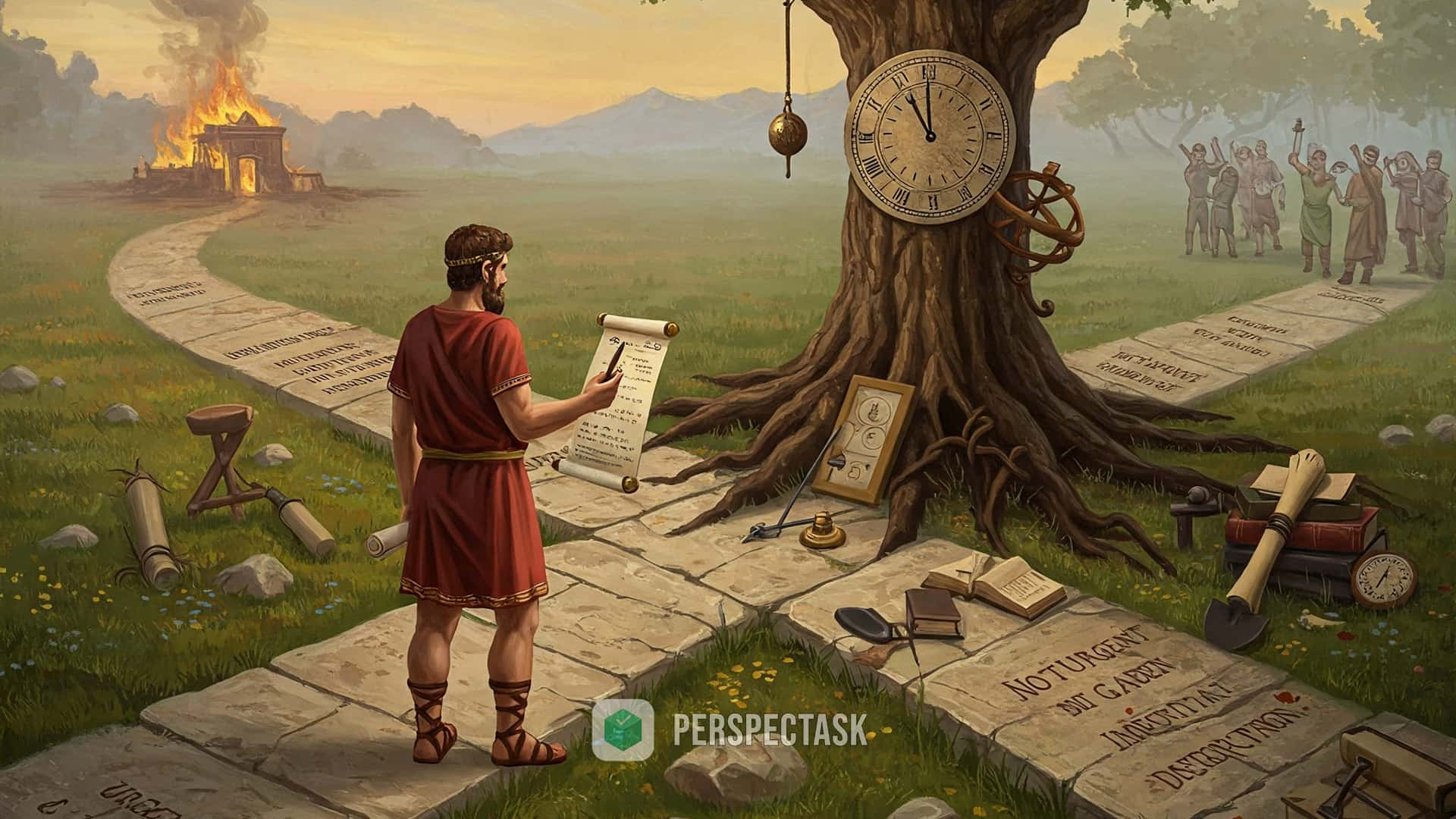Have you ever reached the end of a busy day, exhausted from putting out fires and responding to "urgent" requests, only to realize you haven't made any progress on what truly matters? You're not alone. In our hyperconnected world, everything seems urgent, making it increasingly difficult to distinguish between what needs our attention now and what's merely masquerading as important.
This is where the Eisenhower Matrix comes in - a powerful decision-making framework that has helped leaders, from presidents to CEOs, cut through the noise and focus on what truly matters. Named after President Dwight D. Eisenhower, who led the Allied forces in World War II before becoming the 34th U.S. President, this matrix is your secret weapon against the "tyranny" of the urgent.
The Hidden Cost of Poor Prioritization
Most people spend their days reacting to other people's priorities rather than advancing their own goals. Every time you respond to a non-urgent email marked as "urgent," every time you drop everything for a last-minute request that could have waited, you're not just losing time - you're losing your ability to shape your own destiny.
Think about your last week. How many times did you:
- Postpone important work to handle "urgent" interruptions?
- Feel busy all day but accomplish nothing meaningful?
- Let important personal goals slide because of daily firefighting?
- Miss opportunities because you were too caught up in the urgent?
The cost isn't just in lost productivity - it's in missed opportunities, unrealized potential, and the gradual erosion of your most important goals.
The Four Quadrants of Time Mastery
1. Urgent & Important: Crises and Critical Deadlines
These are the true fires that need your immediate attention. But here's the catch - if you're constantly living in this quadrant, you're already failing at time management. While some crises are unavoidable, many are the result of poor planning or procrastination.
Examples include:
- Critical health issues
- Genuine emergencies at work
- Last-minute deadline for a major project
- Urgent customer escalations
The key is to minimize time spent here by better planning and proactive work in Quadrant 2.
2. Not Urgent but Important: The Key to Long-term Success
This is where real progress happens. These activities don't scream for your attention, but they're the ones that move the needle on your most important goals. The tragedy is that most people neglect this quadrant because these tasks can always be postponed - until it's too late.
Activities in this quadrant include:
- Strategic planning and goal setting
- Relationship building
- Personal development and learning
- Exercise and health maintenance
- Proactive problem prevention
The more time you spend in Quadrant 2, the less time you'll spend fighting fires in Quadrant 1.
3. Urgent but Not Important: The Productivity Killer
This is the deceptive quadrant - tasks that feel important because they're urgent, but don't actually contribute to your goals. These are often other people's priorities masquerading as your emergencies.
Common examples:
- Most emails and notifications
- Unplanned interruptions
- Some meetings and calls
- Many "urgent" requests from others
The solution? Delegate these tasks when possible, or batch them into specific time blocks to prevent them from interrupting your important work.
4. Not Urgent & Not Important: Time Wasters
These activities don't contribute to your goals and aren't time-sensitive. While some of these might be legitimate forms of relaxation, most are just habits that drain your time and energy without providing real value.
Common time wasters include:
- Mindless social media scrolling
- Excessive TV watching
- Time-killing activities
- Busy work with no clear purpose
Implementing the Matrix in Real Life
Understanding the matrix is one thing; applying it is another. Here's your practical guide to implementation:
- Start with a brain dump: List everything demanding your attention right now.
- Ask two questions for each item:
- Is it urgent? (Does it require immediate attention?)
- Is it important? (Does it contribute to your long-term goals and values?)
- Place each item in its quadrant and take appropriate action:
- Q1: Do immediately
- Q2: Schedule for focused work time
- Q3: Delegate or batch process
- Q4: Eliminate
Common Pitfalls to Avoid
Even with this powerful framework, people often stumble in predictable ways:
- Misidentifying urgency (confusing other people's emergencies with your own)
- Neglecting Quadrant 2 activities because they can always be postponed
- Allowing Quadrant 3 activities to masquerade as Quadrant 1
- Not being ruthless enough with Quadrant 4 activities
- Failing to regularly review and adjust their matrix
Master the Eisenhower Matrix with PerspecTask
While the Eisenhower Matrix is powerful in theory, implementing it consistently can be challenging. This is where PerspecTask comes in. I've built features which can support this framework:
- Visual matrix view of your tasks
- Each goal can have multiple parent goals, allowing customization
- Priority-based task scheduling
- Time tracking to identify where you're really spending your time
Remember: A framework is only as good as your ability to use it consistently. PerspecTask makes the Eisenhower Matrix not just theoretical, but practical.
Your Path to Better Decisions
The Eisenhower Matrix isn't just another time management tool - it's a fundamental shift in how you approach decisions and priorities. It's about understanding that being busy isn't the same as being productive, and that true productivity comes from focusing on what's truly important, not just what's screaming for attention.
Take your first step now. Open PerspecTask and categorize your current tasks using the matrix. You might be surprised to find how many of your "urgent" tasks aren't actually important, and how many important tasks you've been putting off. Your future self, with their achieved goals and reduced stress, will thank you.
Ready to apply these productivity methods?
PerspectTask helps you implement these techniques in your daily workflow for maximum efficiency.
Start for Free →Pro two-week trial · No credit card required · Free forever plan available

